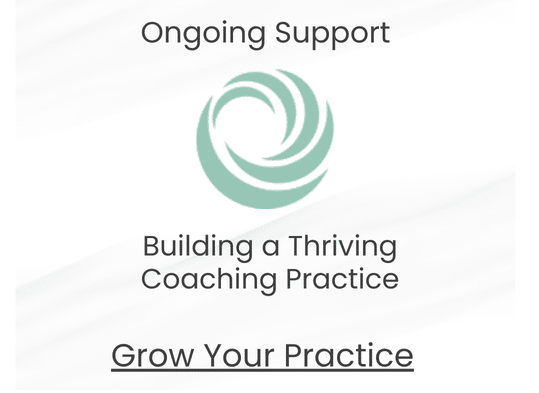by Megan McDonough
Living your highest and best self requires two related states: being completely grounded in your authentic self, and stretching out beyond that place to grow into the possible. One demands ease and roots, and the other, wings and discomfort. Together, they create a dynamic, creative tension that, when fully expressed, offers a tremendous gift to giver and receiver. Your highest and best self does the highest and greatest good. You benefit. We benefit. This is what the world needs–you. More importantly, this is what you need–to be who you are. This lesson came to me at a most unexpected time: while my husband and I split wood.
The Hidden Grain
Splitting wood has a meditative rhythm. My husband, Joe, loads the wood onto the machine. I pull the lever that drives the wedge into the wood. Joe picks up the next log while I drop the split pieces. The wood Joe had just loaded was unremarkable and average. It looked the same on the outside as every other piece. But the inside was a different story.
When a particular piece split in half with the usual pop, Joe and I stopped in surprise. Inside was a beautiful artwork of nature. In the three decades we’ve been splitting wood together, we’ve never seen this:
The grain was spectacular. Known in the wood industry as tiger stripe maple, it varied in color and texture, with a luminescent, smooth stripe contrasted with an adjacent rough, darker stripe. Held in different lights, the stripes shone like the tiger-eye gemstone. This is the high-end wood of fine furniture and violins.
Sometimes life splits us wide open–through the wedge of joy and ecstasy, or the wedge of pain and suffering. Then a new aspect of self comes to light. The hidden grain is revealed.
Regret
The silence was deafening when Joe stopped the machine. We both had the same immediate gut feeling: regret. We had taken a very valuable tree–a unique, exotic tree that if put to its best and highest use could have become fine furniture, appreciated for generations, or wood flooring admired with every step, or a violin or a guitar–and we’d turned it into little three-foot pieces to burn. What a waste of potential.
We thought perhaps it wasn’t so bad. Maybe the special grain only ran through one small section of the huge tree. But no. We watched with dismay as piece after piece showed progressively more beautiful wood. The tractor bucket was piled high with the gorgeous grain. We stopped many times and reconsidered. Was there something we could do with these small pieces other than burn them? We kept coming back to the same conclusion: There was no way to salvage it. The action of cutting down the tree could not be taken back. The past cannot be undone.
Clarity
Being split open leaves us vulnerable. When we’re naked and afraid, it’s easy to thrash out, blaming anything or everything, anybody or everybody. It’s equally easy to withdraw, going within to find solace, or at least a numbing of the pain. When joy splits us open, we hold on tightly. We want it to last, to be worthy, to do right by it. We know, and regret, its fleeting nature.
This too shall pass. Except the pain never passes as quickly and the joy never stays as long as we want. Immovable joy and peaceful pain are possible. To see clearly the unbiased truth of what is–not what we think should be–creates a sanctuary. Inner stability has power born of clarity.
Self-leadership
We make a decision that we think is right (or life hands us a decision), and it turns out to be wrong. The options are limited. The only way forward is to continue on the route that the prior action and decision now dictates. There’s disappointment in what could have been–a recognition that, if we had seen the truth of what lay hidden, we would have taken an entirely different path. What will never be looms large in the mind’s eye. If we knew then what we know now, life would be different.
Regret has an insatiable appetite if left unchecked. It never gets filled up, no matter how much it gorges on what-ifs. Like Pavlov’s dog, if-onlys and what-ifs make regret even hungrier. Regret demands some degree of feeding. It has to do its little dance of woe. Moments come, though, when a question peeks out: Who is leading that dance–you or regret? Which partner is leading and which is following–and in what direction is that leader heading?
Defining Moments
One morning, I find a square, planed slab of striped maple wood on the kitchen table. It’s even more beautiful after being finished. The smoothness enhances the color variations, making it glow and seem to change color. When I ask about it over coffee, Joe tells me he’s making a tie hanger for our son. When regret subsides and clarity comes, when the dance is ready to move in a new direction, possibilities open.
Joe’s ability to see more prompted me to do the same. Over coffee, we played with form. Could this be a bowl? A spoon? Chopsticks? A frame? Anything could happen. Divergent thinking is liberating. Seeing possibilities where before you saw only a dead end is enlivening.
One idea caught–let’s make a bookmark from the wood. I can’t give you the actual bookmark over the Internet, but here’s a PDF version of the result.
Every time you touch, see, or use this bookmark, may you see the infinite possibility of life itself. May you see how each decision is never a done deal. Each moment opens up a new path, a new playground. Let it be a reminder that every regret can be reshaped.
Life is such a gift. You, like the striped maple, have all sorts of beautiful, intricate, dark and light variations. The highest and best use of self comes when you put your whole self in–the perfect and imperfect, the hopeful and doubtful, the energetic and the exhausted.
—This post was originally published in The Huffington Post.
Megan McDonough is CEO of Wholebeing Institute, an educational organization co-founded with Dr. Tal Ben-Shahar. WBI is committed to spreading ideas and practices that can help individuals and groups live life to its fullest.
Click here for a course listing.











I love this and can almost feel that bookmark in my hand Beautifully written Megan! Thank you!
This is a good reminder for me. Thank you. I like your description of you and your husband working together too. Sometimes that is the grain for me with my husband. We are doing a good sized remodel on an old building (we both love old things) and sometimes the work is exhausting, tedious and dirty and I feel we are only barely moving forward. And then there are times when we get into a piece of the project where we work together perfectly. We can go for hrs without speaking (extroverts nightmare-we are both solid introverts) making something beautiful with our team work. We have each commented on different occasions that it’s as if we are dancing together. Anticipating each other’s next step. I love those moments. And you have reminded me to savor a bit more. Thank you.
You are so welcome, Kelli and Alice!